10.1 Community Ecology
Interspecific Interactions
In nature, populations of a single species rarely exist in isolation. Instead, they share their habitat with many other species, forming what ecologists call a community. The variety of species in a community, along with their relative abundance, is referred to as species diversity. Some environments, like the icy landscapes of Antarctica, have relatively low species diversity but still support a surprising range of life. In contrast, tropical rainforests are so rich in species that scientists have yet to fully catalogue their biodiversity.
Ecologists study communities to understand how species interact with one another – these relationships are known as interspecific interactions. Such interactions can take many forms. For instance, a bee pollinating a flower benefits both species, while a lion hunting a zebra benefits one species at the expense of the other. Even seemingly minor relationships, like moss growing on the bark of a tree, can have ecological importance.
To better understand these dynamics, ecologists classify interspecific interactions based on whether they benefit, harm, or have no effect on the species involved. The major types of interspecific interactions include competition, predation, herbivory, parasitism, mutualism, and commensalism.
Competition (-/-)
Competition occurs when individuals of different species compete for the same limited resources in an ecosystem, such as food, water, space, or sunlight. Because these resources are in short supply, the presence of one species can reduce the availability of the resource for another. This makes competition a negative interaction for both species involved.
Each species has a niche, which refers to its role in the ecosystem – how it uses resources, where it lives, and how it interacts with other organisms. To avoid direct competition, many species undergo niche differentiation. This means they evolve to use different parts of the habitat or different types of resources. For example, several species of birds can live in the same tree by feeding in different parts of the canopy or at different times of day.
The competitive exclusion principle states that two species that compete for exactly the same resources cannot stably coexist (Figure 10.1.1). Eventually, one species will outcompete the other, leading to the local extinction of the less competitive species or forcing it to adapt by using different resources.
An experimental example of this principle is shown with two Paramecium species – Paramecium aurelia and Paramecium caudatum (types of protists). When grown individually in the laboratory, they both thrive. But when they are placed together in the same test tube (habitat), P. aurelia outcompetes P. caudatum for food, leading to the latter’s eventual extinction.
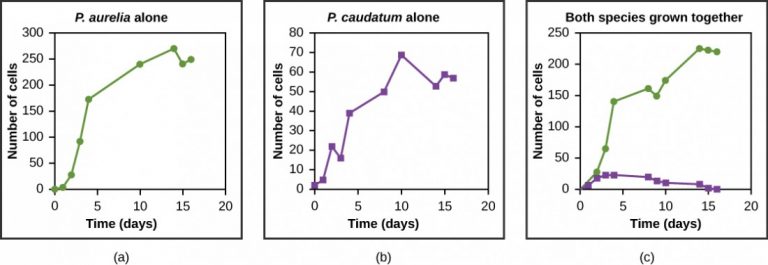

Herbivory (+/−)
Herbivory is an interaction in which an animal feeds on a plant or algae. It benefits one species (the herbivore) and harms the other (the plant), making it a positive/negative interaction. Herbivores often consume parts of a plant without killing it entirely.
Herbivores come in many forms. Some, like deer and rabbits, feed on leaves and stems. Others, like caterpillars and beetles, chew through foliage. Still others, such as aphids, pierce plant tissues and suck out fluids. Grazing animals like bison and elk can shape entire ecosystems by influencing which plant species dominate a landscape.
Plants, in turn, have evolved a wide range of defences to reduce damage from herbivores:
Mechanical Defenses
Mechanical defences include structures like thorns, spines, and tough leaves that make plants harder to eat. For example, the thorns on a hawthorn tree discourage browsing (eating) by deer.
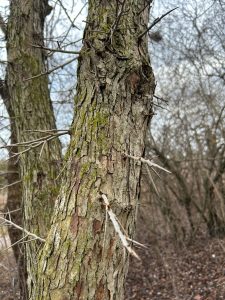
Chemical Defenses
Chemical defences involve the production of compounds that deter herbivores. Some plants produce toxins, bitter-tasting chemicals, or substances that interfere with digestion. For example, milkweed contains toxic compounds that can harm or kill many insects.
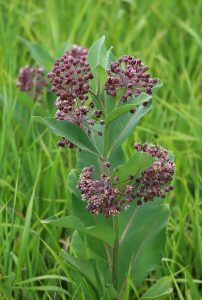
Indirect Defenses
Indirect defences include strategies that attract predators or parasites of herbivores. For example, some plants are able to produce extrafloral nectar, a sugary secretion that attracts ants. Ants then patrol the plant and will attack or chase away herbivores to defend their food source. When plants get damaged by herbivores, they can increase the amount of nectar production to enhance ant recruitment and reduce further herbivory.
In another form of indirect defence, tall goldenrod (Solidago altissima) can detect pheremones released by male gall-inducing flies. This early warning system allows the plant to prime its defences and prepare for attack before damage occurs.
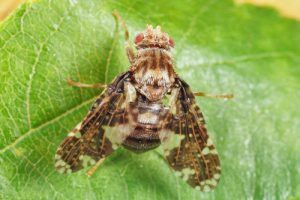
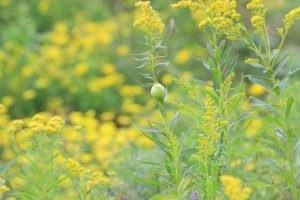
Predation (+/-)
Predation is an interaction in which one species, the predator, kills and eats another species, the prey. This relationship benefits the predator but harms the prey, making it a positive/negative interaction.
Predators have evolved a wide range of adaptations that help them locate, capture, and consume their prey. These include sharp teeth and claws, keen senses, speed, and stealth. At the same time, prey species have developed defences to avoid being eaten:
Behavioural Defenses
Behavioural defences help prey avoid detection or escape attacks. These include fleeing, hiding, forming groups, or startling predators. For example, some animals live in herds or flocks to reduce the chance of any one individual being caught.

Mechanical Defenses
Mechanical defences include physical structures that make prey harder to eat. Examples include the hard shells of turtles, the spines of porcupines, and the tough exoskeletons of many insects.
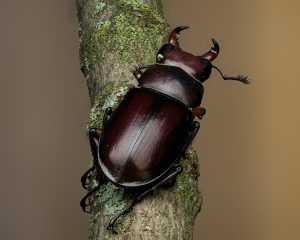
Camouflage
Camouflage allows prey to blend into their surroundings and avoid being seen. A walking stick insect looks like a twig, while a flounder can match the colour and texture of the ocean floor.
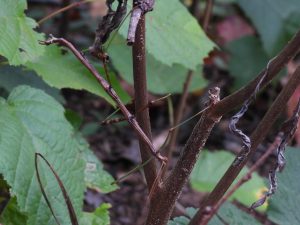
Chemical Defenses
Chemical defences involve the production of toxins or distasteful substances that can deter or even kill predators. These chemical defences are often paired with warning coloration – bright colours or bold patterns that signal danger to potential predators. For example, the monarch butterfly caterpillar sequesters poisons from its food (milkweeds) to make itself poisonous or distasteful to potential predators. The caterpillar is bright yellow and black to advertise its toxicity. The caterpillar is also able to pass the sequestered toxins on to the adult monarch, which is also dramatically colored black and red as a warning to potential predators.
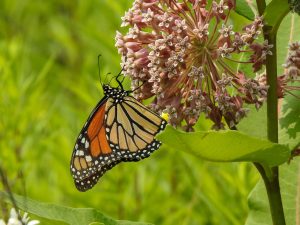

Mimicry
Mimicry is when a harmless species resembles a harmful or unpalatable one. The viceroy mimics the monarch butterfly. Although the viceroy is not poisonous, this resemblance helps the viceroy avoid being eaten.
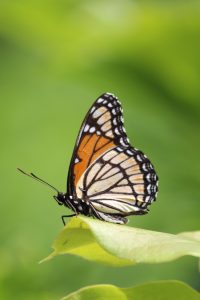
These predator-prey interactions can also cause population cycles. A classic example is the relationship between the Canada lynx and the snowshoe hare. As hare populations increase, lynx have more food and their numbers grow. But as lynx numbers rise, they consume more hares, causing the hare population to decline. This, in turn, leads to a drop in lynx numbers, allowing the hare population to recover – and the cycle begins again.
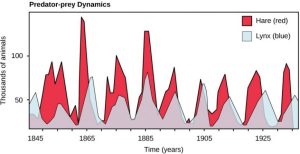
Figure 10.1.13 Image Description
The image is a line and area graph titled “Predator-prey Dynamics.” The x-axis represents time (years) ranging from 1845 to 1935, while the y-axis represents the number of animals (in thousands), ranging from 0 to 150. Two populations are shown: hares (red) and lynx (blue).
The red shaded area represents hare populations, which fluctuate dramatically over time, showing repeated peaks and crashes. The blue shaded area represents lynx populations, which also rise and fall but slightly lag behind the hare populations. Peaks in hare populations are followed by peaks in lynx populations, while hare declines coincide with lynx declines. This illustrates the cyclical relationship between prey and predator populations over the 90-year span, where lynx numbers depend on hare abundance.
Parasitism (+/−)
A parasite is an organism that feeds off another organism called the host. In parasitism, the parasite benefits, but the host is harmed. This makes parasitism a positive/negative interaction. The host is usually weakened by the parasite as it siphons resources the host would normally use to maintain itself. Parasites may kill their hosts, but there is usually selection to slow down this process to allow the parasite time to complete its reproductive cycle before it or its offspring are able to spread to another host.
Parasites come in many forms. Endoparasites, like tapeworms and roundworms, live inside the bodies of animals and absorb nutrients. Ectoparasites, like ticks and lice, attach to the outside of the host and feed on blood or skin. For example, the winter tick (Dermacentor albipictus) infests moose. In some cases, a single moose can carry tens of thousands of ticks, leading to severe hair loss, blood loss, and even death.
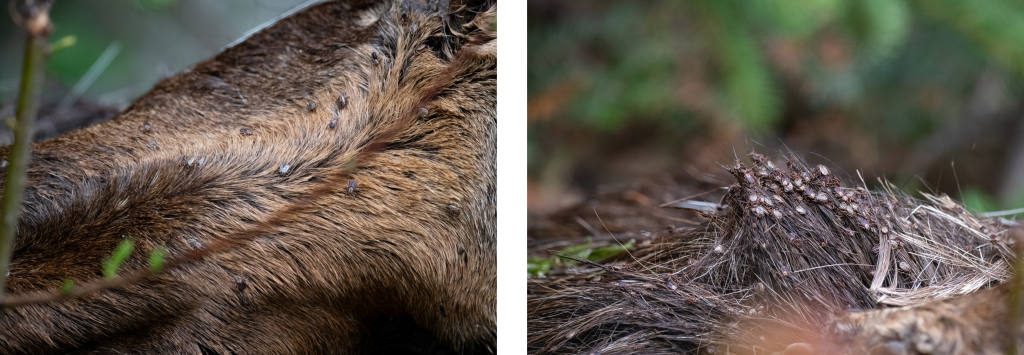
Mutualism (+/+)
Mutualism is a type of interspecific interaction in which both species benefit. This makes it a positive/positive interaction. Mutualistic relationships are common in nature and can involve the exchange of food, protection, or other services that help both species survive or reproduce.
One of the most familiar examples is the relationship between flowering plants and their pollinators. Bees, butterflies, and hummingbirds feed on nectar while helping the plant reproduce by transferring pollen from one flower to another.
Another example is lichen, which is formed by a mutualistic relationship between a fungus and photosynthetic algae or cyanobacteria. The algae produce glucose through photosynthesis, which nourishes both organisms. In return, the fungus provides a protective structure that shields the algae from the environment and helps absorb nutrients from the air.
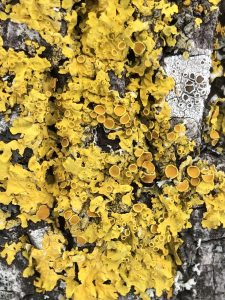
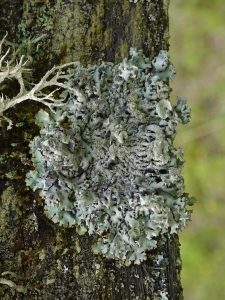
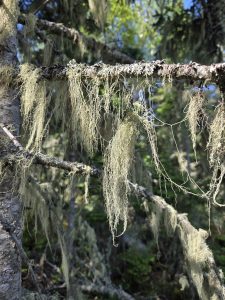
Commensalism (+/0)
Commensalism is an interspecific interaction in which one species benefits while the other is neither helped nor harmed. This makes it a positive/neutral interaction. These relationships can be difficult to study because it’s often hard to prove that one species is truly unaffected.
Commensal relationships often involve one species gaining shelter, transportation, or access to food without impacting the other. For example, barnacles attach themselves to the shells of whales or turtles. The barnacles benefit by gaining access to nutrient-rich waters as the host moves, while the whale or turtle is generally unaffected.
Another example is a bird nesting in trees. The tree is not harmed by the presence of the nest among its branches. The nests are light and produce little strain on the structural integrity of the branch, and most of the leaves, which the tree uses to get energy by photosynthesis, are above the nest, so they are unaffected. The bird, on the other hand, benefits greatly. If the bird had to nest in the open, its eggs and young would be vulnerable to predators.
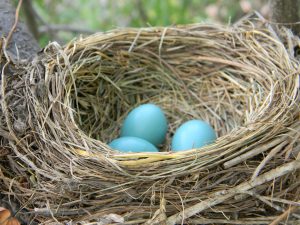
Coevolution
Due to all of these interspecific interactions, species often influence each other’s evolution in a process known as coevolution.
In positive/negative interactions, such as predation, herbivory, or parasitism, one species evolves new ways to exploit another, prompting the other to evolve defences in response. This ongoing back-and-forth can lead to an evolutionary “arms race”. For example, prey animals may evolve better camouflage or faster escape behaviours, while predators become more skilled hunters. Plants may develop toxins or tougher leaves, while herbivores evolve resistance. Hosts may strengthen their immune systems, while parasites evolve ways to hide or suppress those defences.
Mutualistic relationships also drive coevolution. In these cases, traits evolve in both partners that improve the effectiveness of the interaction. You can see this in the relationship between flowers and their pollinators. For example, wild bergamot (also called beebalm, Monarda fistulosa), a native Canadian wildflower with a tubular shape, has coevolved with Beebalm Shortface bees (Dufourea monardae), which have long tongues that can reach the nectar.
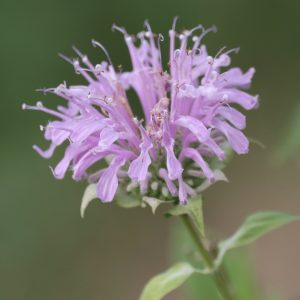
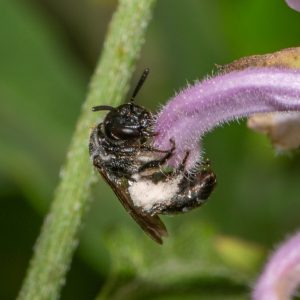
Coevolution can even occur in competitive relationships, where species evolve in response to each other to reduce overlap in resource use. This often leads to character displacement, where competing species evolve differences in traits like body size, feeding behaviour, or habitat use to minimize direct competition. In areas with high bee diversity, species like bumblebees and sweat bees have evolved different foraging times, flower preferences, and tongue lengths to reduce direct competition.
These close interactions are often the result of thousands of years of evolutionary pressure, which shapes the traits and behaviours of both species involved.
Trophic Structure
Now that we’ve explored how populations interact within a community, we can take a broader look at how energy and nutrients move through that community. The trophic structure of a community refers to the feeding relationships among its species. These relationships shape the pathways through which energy and matter flow – from photosynthetic organisms to herbivores, and then to various levels of predators. The step-by-step transfer of energy between these groups is known as a food chain, which illustrates how each organism depends on others for nourishment and survival.
At the base of food chains are producers – organisms that can make their own food, mostly using energy from the sun. On land, these are typically plants. In aquatic environments, producers include phytoplankton, such as photosynthetic protists and cyanobacteria, as well as algae and aquatic plants.
All other levels in the food chain are referred to as consumers because they consume other organisms. Organisms that feed directly on producers are called primary consumers. They are typically herbivores (plant-eating animals) like insects, birds, deer, or rabbits. In the water, primary consumers are zooplankton (microscopic heterotrophic organisms like protists and larvae).
The next level consists of secondary consumers, which are carnivores that eat herbivores. Examples include frogs, small fish, or insect-eating birds. Tertiary consumers are carnivores that feed on other carnivores, and some ecosystems even include quaternary consumers, such as hawks or killer whales, which sit at the top of the food chain. Quaternary consumers are often, but not always, the final consumers, meaning the ones that sit at the top of the food chain.
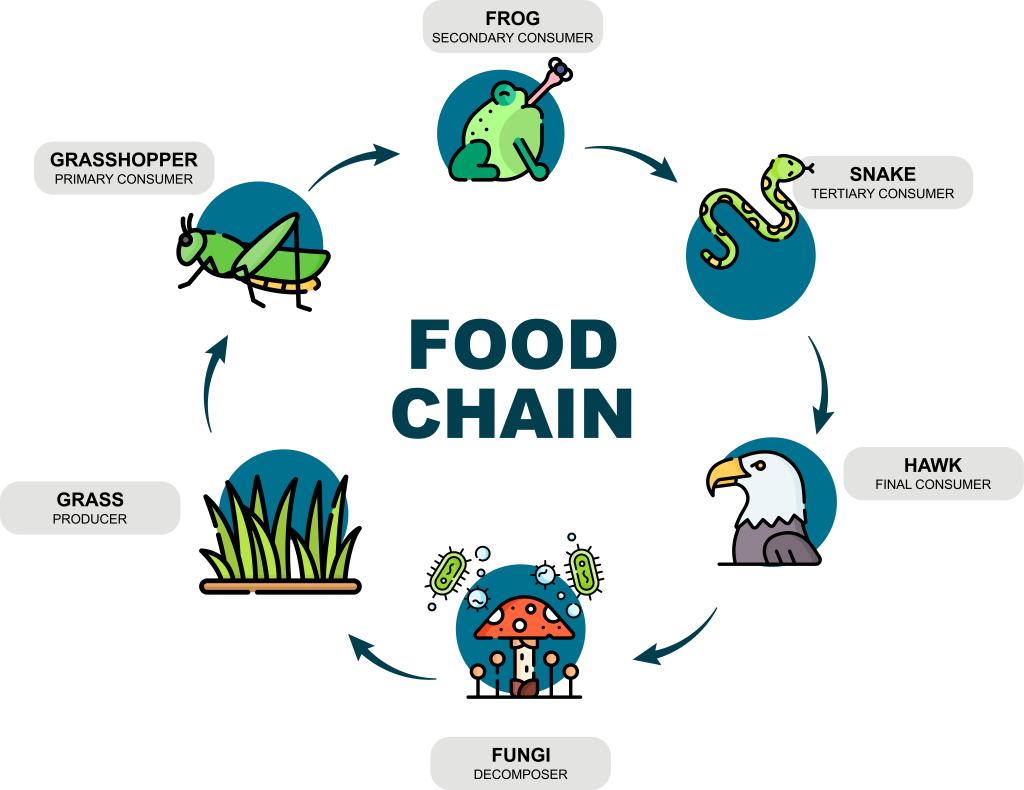
Another important level in food chains is the consumers that get their energy from waste and dead bodies, collectively known as detritus. Detritivores, such as earthworms, millipedes, and some insects, feed on dead organic matter in its early stages of decay. Decomposers, including fungi and many bacteria, break down this material further by secreting enzymes that digest complex molecules into simpler inorganic compounds. These nutrients are then recycled back into the ecosystem, where they can be taken up again by producers. Without decomposers and detritivores, ecosystems would quickly become overwhelmed with waste and dead matter, and the flow of nutrients would grind to a halt.
While food chains help illustrate feeding structure in a community, they are simplified models that don’t fully capture the complexity of real ecosystems. In nature, most organisms feed on more than one species and may be eaten by multiple predators. This means that a single species can occupy more than one trophic level, depending on what it eats and what eats it. To better represent these intricate feeding relationships, ecologists use food webs. A food web is a more realistic and holistic model that maps out all the interconnected feeding interactions within a community. It shows how energy and nutrients move through multiple pathways, often crossing several trophic levels. Food webs highlight the complexity and interdependence of species in an ecosystem, and they help us understand how changes to one part of the system, such as the loss of a species, can ripple through the entire community.
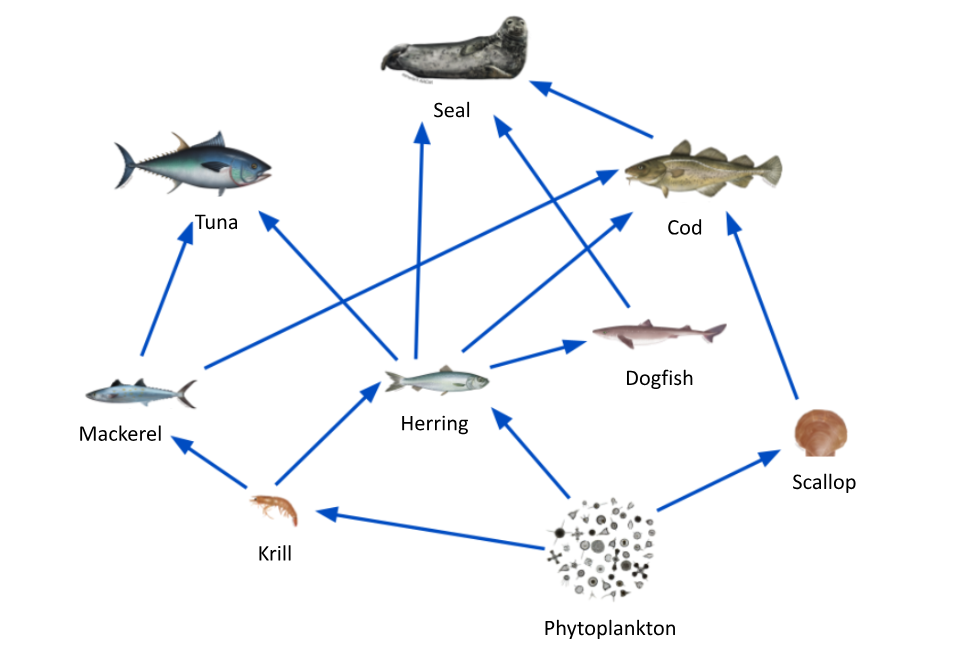
Knowledge Check
Text Description
- Mutualism
- Commensalism
- Predation
- Neutralism
- Two species can share the same niche indefinitely
- Predators and prey evolve together to maintain balance
- Two species competing for the exact same resources cannot stably coexist
- Herbivores will always be outcompeted by carnivores
- A tick feeding on a moose
- A butterfly pollinating a flower while collecting nectar
- A lion preying on a zebra
- Barnacles hitching a ride on a whale
- Hawk
- Deer
- Mushroom
- Algae
- They consume only live animals
- They compete for light with producers
- They break down dead material, recycling nutrients back to the ecosystem
- They produce their own energy through photosynthesis
Answers:
- c
- c
- b
- b
- c
OpenAI. (2025). ChatGPT. [Large language model]. https://chat.openai.com/chat
Prompt: Create 5 multiple-choice questions using the following content
“16.4 Community Ecology” from Biology and the Citizen by Colleen Jones is licensed under a Creative Commons Attribution 4.0 International License, except where otherwise noted.
“18.1 Importance of Biodiversity” from Biology and the Citizen by Colleen Jones is licensed under a Creative Commons Attribution 4.0 International License, except where otherwise noted.
“46.2: Energy Flow through Ecosystems” from Unit VIII: Ecology by LibreTexts is licensed under a Creative Commons Attribution 4.0 International License, except where otherwise noted.

